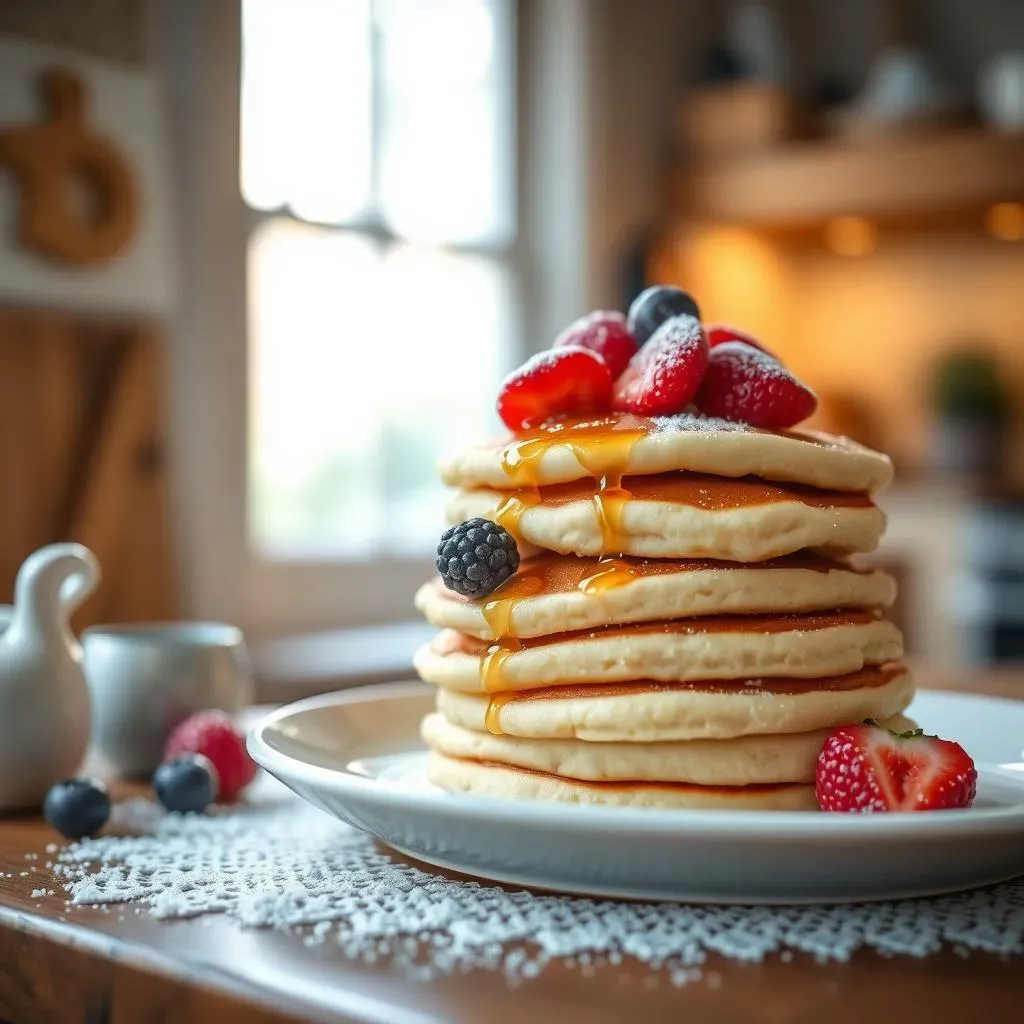Table of Contents
Tired of flat, sad gluten-free pancakes? I get it. Many gluten-free options just don't hit the spot, often ending up dense or crumbly. But what if I told you there's a way to make light, fluffy pancakes that are also gluten-free? Enter coconut flour, a true game-changer in the world of gluten-free baking. This isn't your typical pancake recipe; it's a journey into creating the perfect stack using this unique ingredient. We'll explore why coconut flour is special, how to mix the batter just right, and the secrets to cooking them to a golden perfection. We will also explore other gluten-free options such as gluten-free pancake using oat flour. By the end, you'll have all the knowledge to whip up a delicious gluten-free pancake recipe with coconut flour that will leave you wondering why you ever bothered with other recipes. So, let's get flipping and make some amazing pancakes!
Why Coconut Flour is a Game Changer for GlutenFree Pancakes
Why Coconut Flour is a Game Changer for GlutenFree Pancakes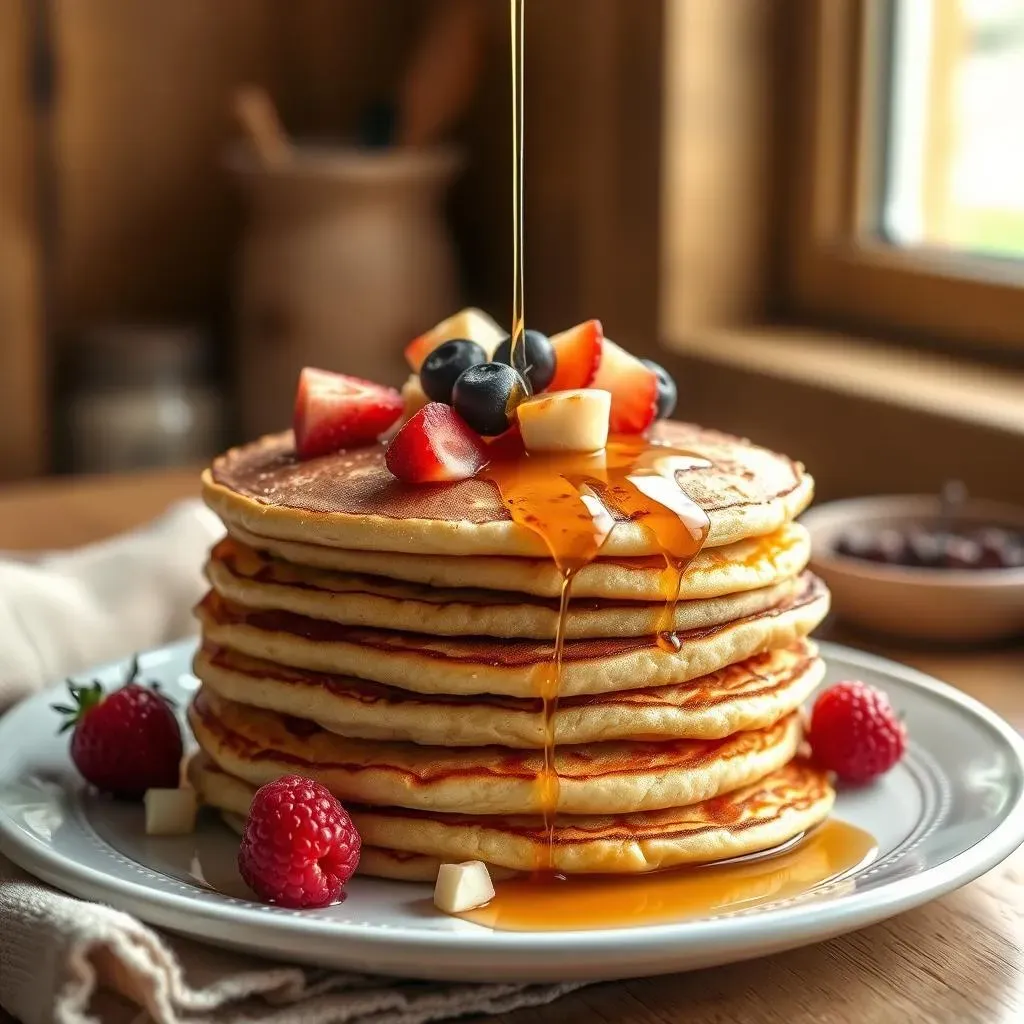
The Magic of Coconut Flour
So, you're diving into the world of gluten-free pancakes, huh? Let me tell you, coconut flour is not like your average flour. It's made from dried coconut meat, and it's a real superhero in the gluten-free world. Unlike wheat flour that's full of gluten, coconut flour is naturally gluten-free, which is great news for anyone with sensitivities or celiac disease. But that's not all; it’s also packed with fiber and protein, making your breakfast more filling and nutritious. It's like a secret weapon for making pancakes that are actually good for you.
It’s not a simple swap with other flours, though; this stuff is thirsty! It soaks up liquid like a sponge, which means recipes need a little extra attention. Don’t worry, I'll guide you through it. Think of it as a different kind of baking adventure, one where you end up with delicious, fluffy pancakes that you can feel good about. You might even want to compare it to other recipes, like a gluten-free pancake recipe comparison, to see how it stacks up.
Absorbency: Coconut Flour's Superpower (and Challenge)
Now, let's talk absorbency. This is where coconut flour really shows its unique character. Because it’s so good at soaking up liquid, you can't just use it like regular flour. You'll need way less of it in your recipe, and a lot more eggs and liquids. It’s like a tiny, super-absorbent sponge in your batter. This is why a lot of gluten-free recipes call for a mix of different flours, but with coconut flour, you get this amazing structure and lightness, if you get the ratios right.
This high absorbency means that a tiny bit of coconut flour can make a big difference. It is also why it's so important to get the measurements correct. Too much coconut flour, and your batter will be thick as mud; too little, and your pancakes might fall apart. Think of it like Goldilocks, we need to find the just right balance. It’s a delicate dance, but trust me, the results are worth it. You can also take a look at how other flours work in a fluffy gluten free pancake using almond flour, to see the differences.
Flour Type | Absorbency | Typical Use |
|---|---|---|
Wheat Flour | Medium | Traditional Baking |
Coconut Flour | High | Gluten-Free Baking |
Almond Flour | Medium | Gluten-Free Baking |
Health and Dietary Wins
Beyond just being gluten-free, coconut flour brings some serious health perks to the table. It's packed with fiber, which is great for keeping you full and happy. Plus, it has a decent amount of protein, which can help keep your energy levels steady. For those of us watching our carbs, it's also a lower-carb option compared to many other flours. It’s like getting a healthy boost with your breakfast, without having to sacrifice taste or texture. So it's perfect if you are looking for a gluten-free pancake recipe for weight loss.
Using coconut flour isn’t just about avoiding gluten; it’s about making a choice that’s good for your body. It fits into so many dietary plans too, like paleo and keto diets, making it a versatile ingredient for different needs. It’s a win-win: you get delicious, fluffy pancakes, and you’re also treating your body right. What's not to love about that?
Mastering the Art of Coconut Flour Pancake Batter
Mastering the Art of Coconut Flour Pancake Batter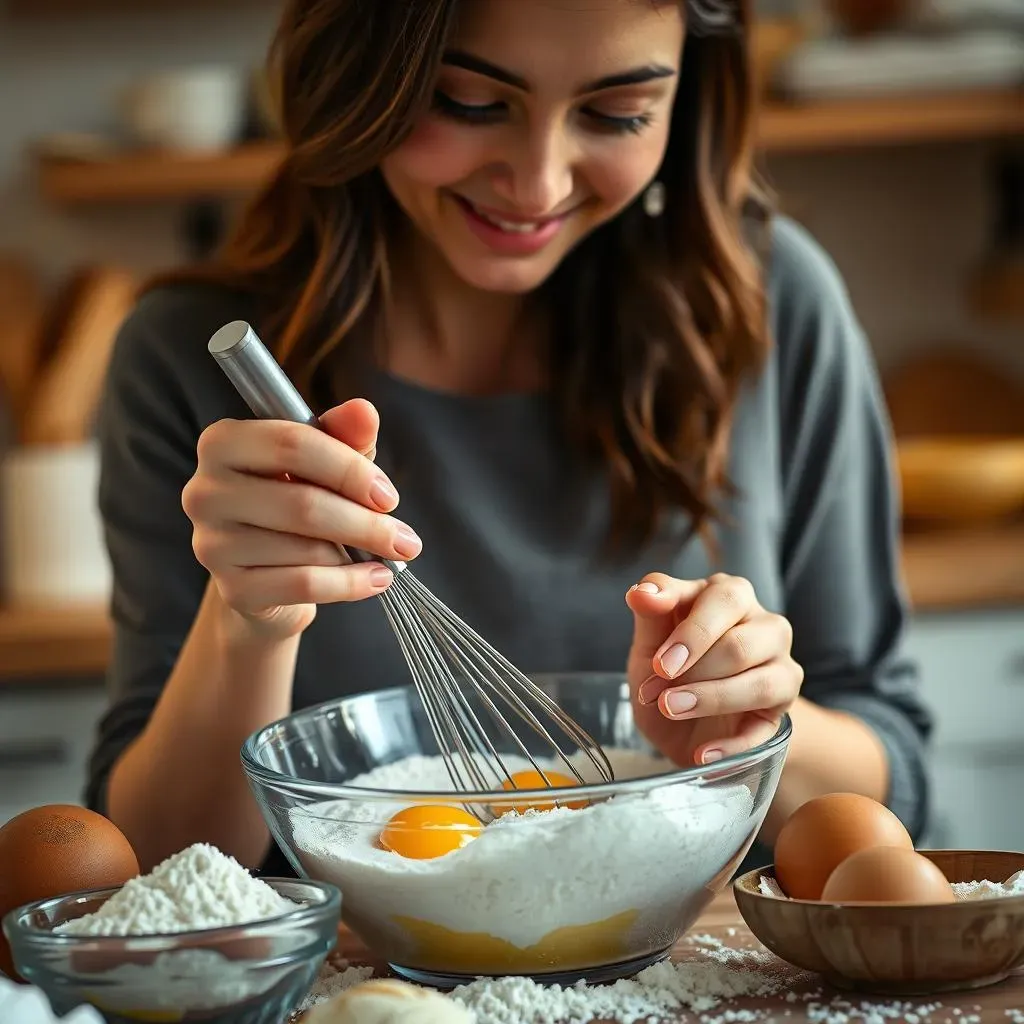
The Perfect Mix: Step-by-Step
Alright, so you've got your coconut flour and you're ready to make some magic, right? The key here is to go slow and be mindful of how thirsty this flour is. First, grab your bowl and whisk together your dry ingredients: the coconut flour, and any spices you might want to add. Then, in a separate bowl, whisk your wet ingredients, like your eggs, oil, and liquid. Now, here's the tricky part: slowly pour the wet into the dry, while whisking constantly. This helps prevent lumps and gives you a smooth batter. Don’t dump everything at once; that’s a recipe for disaster.
I usually start with a smaller amount of liquid than the recipe calls for, and then add more gradually until the batter looks like a thick, pourable consistency. It should be thicker than a normal pancake batter, but not so thick that it's like dough. It's like finding the sweet spot for a quick breakfast recipe, not too runny, not too stiff. Let the batter sit for a few minutes too; this allows the coconut flour to fully absorb the liquid. This step is crucial to avoid dry pancakes later on.
- Whisk dry ingredients separately.
- Whisk wet ingredients separately.
- Slowly combine wet and dry.
- Let the batter sit for a few minutes.
The Right Ingredients: Eggs, Oil, and Liquid
Okay, let's chat about the supporting cast: eggs, oil, and liquid. Eggs are super important in coconut flour recipes. They provide structure and help bind everything together. Because coconut flour is so absorbent, you need more eggs than you would in a traditional pancake recipe. It’s like they are the glue holding our pancake dreams together. For oil, I usually use melted coconut oil, but you can use olive oil or any other neutral-flavored oil too. It adds moisture and helps keep the pancakes from sticking to the pan.
As for the liquid, you have options. Milk, plant-based milk, or even water works. The type of liquid you use can alter the final flavor and texture. If you are looking for a gluten free pancake with plant based milk, this is a great recipe. I often use almond milk, it keeps the recipe dairy-free, and it adds a touch of nuttiness. Remember, the key is to add the liquid gradually, until you get the right consistency. If the batter looks too thick, add a splash more liquid. If it looks too thin, add a tiny bit more coconut flour. It’s all about finding that perfect balance, like when you’re making a gluten-free pancake using banana, you need to adjust the liquid.
Ingredient | Purpose | Notes |
|---|---|---|
Eggs | Structure, binding | Use more than usual |
Oil | Moisture, prevents sticking | Coconut or neutral oil |
Liquid | Consistency | Milk, plant milk, or water |
Cooking and Serving Your Coconut Flour Pancakes
Cooking and Serving Your Coconut Flour Pancakes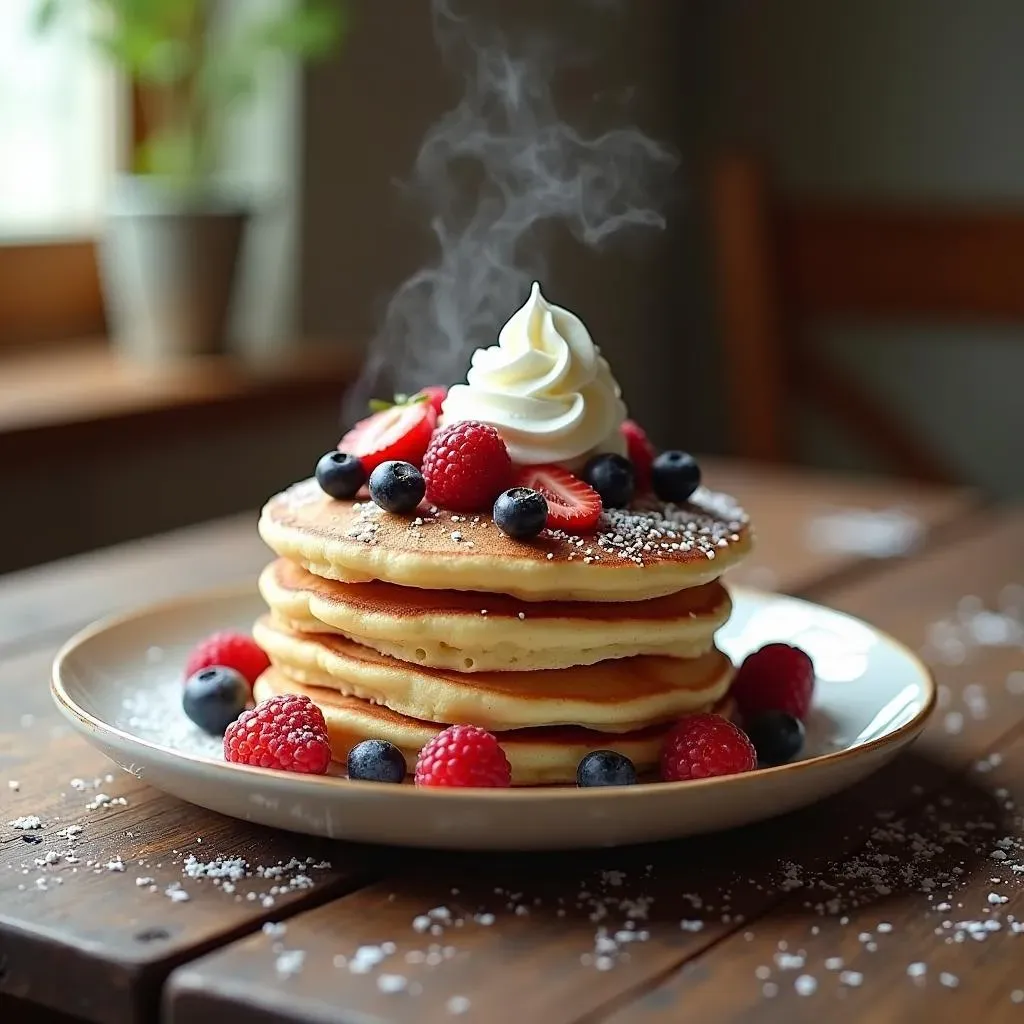
Cooking Techniques: Getting the Golden Brown
Okay, so the batter is ready, and now it's time to actually cook these beauties. The key here is medium-low heat. High heat is your enemy with coconut flour pancakes; they burn super easily. Preheat your pan or griddle, and add a little coconut oil or butter. Once the pan is hot, pour about ¼ cup of batter for each pancake. You don’t want to overcrowd the pan, otherwise, they’ll steam instead of fry. It's like a slow dance, not a race to the finish line. Let them cook for a few minutes until they are golden brown on the bottom, and you see some bubbles forming on top. It’s a bit different than making a gluten-free pancake using rice flour, which can be a bit more forgiving.
Remember, patience is key. Don’t be tempted to crank up the heat to speed things up; you’ll just end up with burnt outsides and a gooey center. A good sign to flip is when you see the edges start to look set and the bubbles are popping up on the surface. These are more delicate than regular pancakes, so be gentle when you flip them. Use a thin spatula and slide it carefully under the pancake. Cook the other side for another couple of minutes, until golden brown. And there you have it: golden, fluffy, coconut flour pancakes. If you are looking for another recipe, you can try a gluten free pancake with tapioca starch, as it has different technique.
Flipping with Finesse: A Gentle Touch
Alright, let’s talk about flipping, the moment where many pancakes meet their doom. These are not your regular pancakes; they’re a bit more fragile. Because coconut flour pancakes are more delicate, you can't just flip them with wild abandon. Use a thin, flexible spatula, and slide it gently under the pancake. Don’t try to force it; if it’s sticking, it’s not ready to be flipped. It’s all about finesse, not force. Think of it like you are handling a delicate flower or flipping a gluten free pancake without xanthan gum, which can also be fragile.
Once you’ve successfully flipped, cook the other side for a minute or two until it's golden brown. Then, carefully remove them from the pan and set them aside on a plate. I usually stack them up as I cook them, and they look pretty amazing. You can also make a large batch, store them in the fridge for a few days, or freeze them for later. It’s a great way to have a quick breakfast ready to go. You can also explore a gluten-free pancake with a blend of flours, to compare the difference.
Step | Description | Tips |
|---|---|---|
Heat | Medium-low heat | Avoid high heat |
Flip | Gentle with a thin spatula | Wait until edges are set |
Cook | Until golden brown on both sides | Don't overcook |
Serving Suggestions: Toppings and Mix-Ins
Now for the fun part: serving! These pancakes are like a blank canvas, ready for your favorite toppings. Drizzle them with maple syrup, honey, or a sugar-free syrup if you’re watching your sugar intake. Fresh berries are always a great addition; they add sweetness and a burst of flavor. If you are looking for a gluten-free pancake with honey, you can skip the maple syrup. A dollop of Greek yogurt or whipped cream makes them extra decadent.
Don’t be afraid to get creative. You can add chocolate chips, nuts, or seeds to the batter. A little vanilla extract or cinnamon goes a long way in enhancing the flavor. You can also add a mashed banana for extra sweetness and moisture, like in a gluten-free pancake using banana recipe. You can also try adding some protein powder to make it a complete meal. It's all about making these pancakes your own. So, go ahead and top them your way, and enjoy every bite!
- Maple syrup
- Fresh berries
- Greek yogurt
- Chocolate chips
- Nuts or seeds
Adapting the Recipe for Dietary Needs and Preferences
Adapting the Recipe for Dietary Needs and Preferences
Dairy-Free and Vegan Options
So, you're thinking about making these pancakes but need them to be dairy-free or even vegan? No problem at all! For dairy-free, it's super simple. Just swap out any milk with your favorite plant-based milk. Almond milk, soy milk, oat milk, they all work great. They each bring a slightly different flavor to the table, so it's fun to experiment. I've found that oat milk makes the pancakes extra creamy, while almond milk adds a touch of nuttiness. You can also use water if you're in a pinch, but the plant milk adds a nice richness.
Now, for vegan pancakes, we’ve got a bit more to think about, since we have to replace the eggs. The good news is, it is totally doable. Flax eggs or chia eggs are great options. You can make them by mixing one tablespoon of ground flaxseed or chia seeds with three tablespoons of water, and letting it sit for about 5 minutes until it gets all jelly-like. This mixture acts as a binder, just like eggs. It’s pretty amazing how versatile these seeds can be! Also, if you are looking for a recipe that's already vegan, try the gluten-free pancake without eggs, and see how it compares.
- Plant-based milk for dairy-free
- Flax or chia eggs for vegan
- Experiment with different flavors
Sweetening Without Refined Sugar
Okay, let's talk sweetness. If you're not into refined sugar, there are plenty of ways to make these pancakes sweet without it. Maple syrup or honey are natural sweeteners that work great. They give a warm, rich flavor to the pancakes. You can also use agave nectar or coconut sugar. Each of these sweeteners has its own unique flavor profile, so it's fun to see which one you like best. If you are looking for a gluten-free pancake with honey, this is a great option.
For those watching their sugar intake, sugar-free sweeteners like stevia or erythritol are good alternatives. Just make sure to use them in small amounts, as they are often much sweeter than sugar. It’s all about finding what works best for you and your taste buds. You can also use mashed ripe bananas, which not only add sweetness but also moisture, like in a gluten-free pancake using banana recipe. So, you can have your sweet pancakes without the guilt!
Sweetener | Type | Notes |
|---|---|---|
Maple syrup | Natural | Rich flavor |
Honey | Natural | Warm flavor |
Stevia | Sugar-free | Use sparingly |
Mashed banana | Natural | Adds moisture and flavor |
Troubleshooting and FAQs for Perfect Pancakes Every Time
Troubleshooting and FAQs for Perfect Pancakes Every Time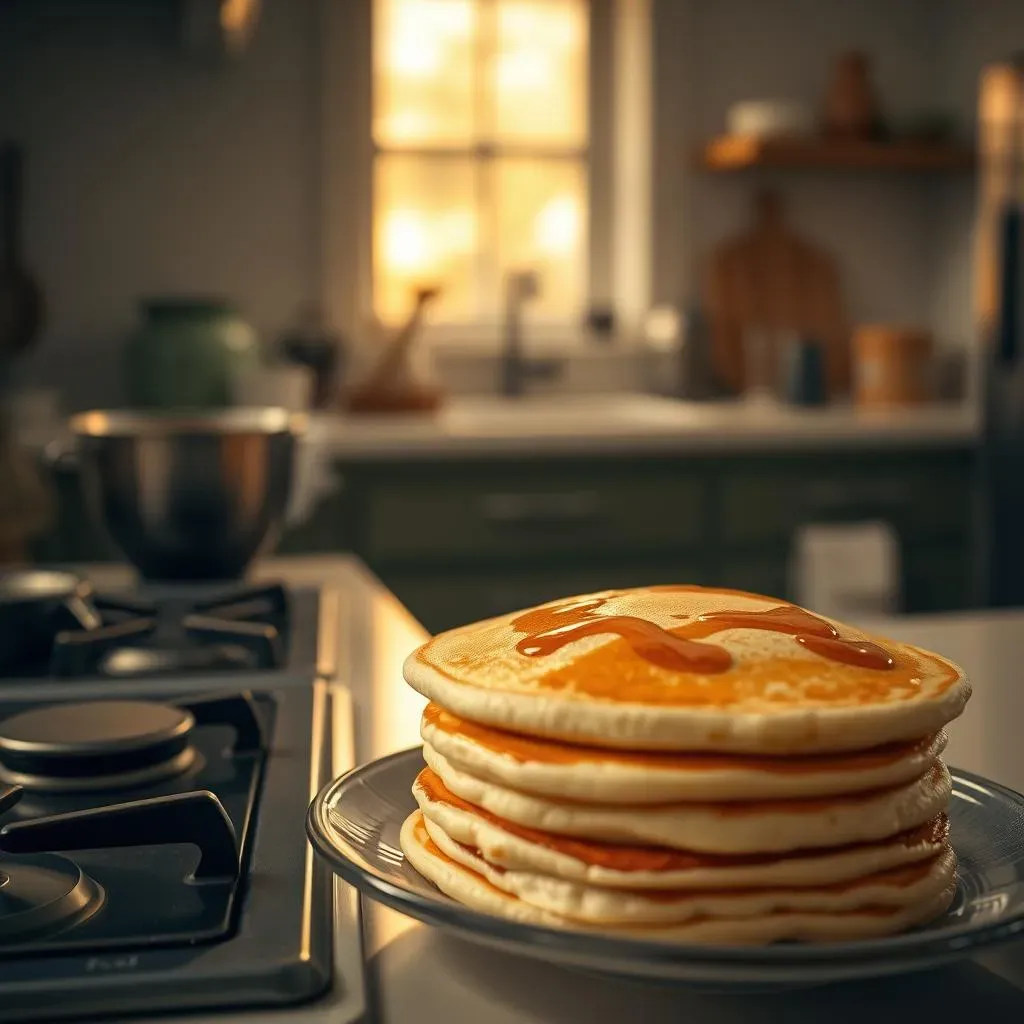
Common Questions About Coconut Flour
Okay, so you’ve tried making these coconut flour pancakes, and maybe things didn’t go exactly as planned. Don't worry, it happens! Let's tackle some common questions. One big one is: "Why are my pancakes so dry?" Well, that usually means you didn't use enough liquid or eggs, or maybe you used too much coconut flour. Remember, coconut flour is a thirsty ingredient, so it needs a good amount of liquid to balance it out. Another frequent question is, "Why are my pancakes falling apart?" That could be because the batter wasn't thick enough, or you didn't let it sit long enough for the flour to absorb the liquid. It is a learning curve, but that is how we learn. Also, it is worth trying a gluten-free pancake recipe troubleshooting guide to help you out.
Another question I often hear is, "Can I substitute coconut flour with something else?" The short answer is: not really, without changing the whole recipe. Coconut flour is unique because of its high absorbency. It's not a simple 1:1 swap with other flours. If you want to use other flours, you'd need to find a recipe that is made for that flour. For example, a fluffy gluten free pancake using almond flour will need different measurements. So, stick with the recipe, and trust the process. And remember, practice makes perfect! It might take a few tries to get it just right, but the delicious results are worth it.
Question | Possible Cause | Solution |
|---|---|---|
Dry pancakes | Not enough liquid/eggs, too much flour | Add more liquid/eggs, reduce flour |
Falling apart | Batter too thin, didn't let it sit | Thicken batter, let it sit longer |
Can't substitute | Unique absorbency | Stick to recipe |
Tips for Avoiding Common Mistakes
Let's talk about avoiding those pancake pitfalls. First, always measure your coconut flour accurately. It's easy to scoop too much, and that can throw off the whole recipe. Use a kitchen scale if you can, for the most precise measurements. Second, don't skip the step of letting the batter sit. It might seem like an unnecessary wait, but it's crucial for the coconut flour to fully absorb the liquid, making for fluffy pancakes. Third, don't overmix the batter. Just mix it until everything is combined. Overmixing can make the pancakes tough. Think of it like handling a delicate flower; you want to be gentle. Also, if you want to try a different method, try a gluten-free pancake recipe made with a blender.
Another tip: don't overcrowd your pan. Give each pancake its own space to cook properly. And finally, keep the heat on medium-low. High heat is the enemy of coconut flour pancakes. They burn easily and you will end up with a sad pancake. If you’re still having trouble, you can always check out more tips in a quick breakfast recipe guide. Remember, making pancakes is a skill, and like any skill, it takes time and practice to get it just right. But with these tips, you'll be well on your way to making perfect gluten-free coconut flour pancakes every time!
- Measure flour accurately
- Let batter sit
- Don't overmix
- Cook on medium-low heat
Wrapping Up Your Coconut Flour Pancake Adventure
So, there you have it – a complete guide to mastering the art of gluten-free coconut flour pancakes. We've journeyed through the quirks of coconut flour, tackled the batter, perfected the cooking process, and even explored ways to customize your stack. It might have seemed a little tricky at first, but with a bit of practice, you’ll be flipping these light and fluffy delights like a pro. Remember, the key is in the details: the correct measurements, a smooth batter, and a gentle touch on the griddle. Now, armed with this knowledge, go forth and make pancakes that are not only gluten-free but also incredibly tasty. And if you find yourself wanting to experiment more, why not check out our other recipes like gluten-free pancakes without xanthan gum or gluten-free pancakes with tapioca starch? Happy cooking, and even happier eating!
